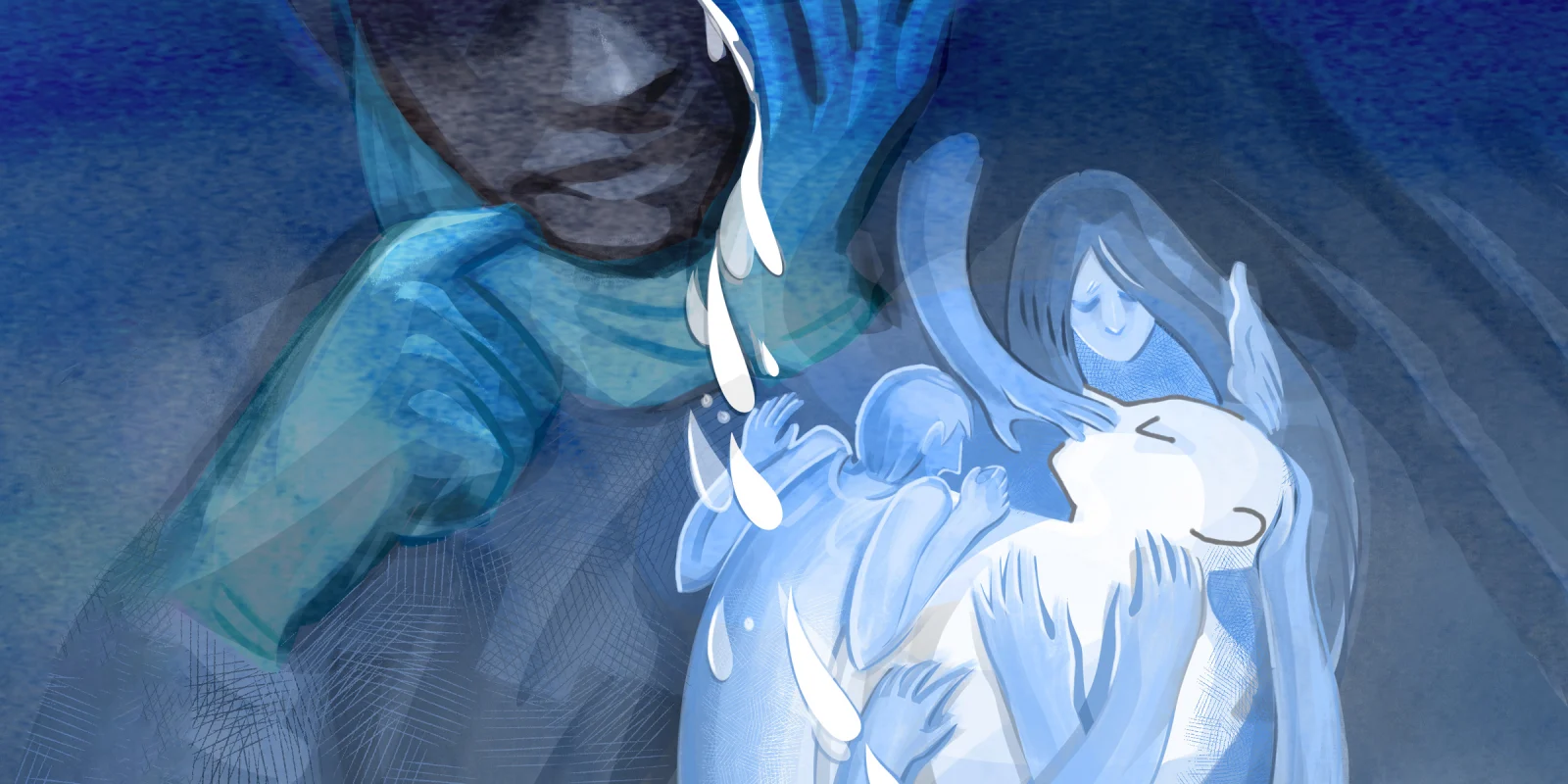As a medical student, I was taught to approach goals-of-care discussions with a focus on patient values, and to frame “Do Not Resuscitate” as “allowing natural death,” a potentially less harmful option when compared to chest compressions and intubation.
After my father was diagnosed with metastatic cancer in my fourth year of medical school, we began to have similar discussions in our own home. I was relieved that my father did not want to be resuscitated; I thought that a natural death would protect him from unnecessary suffering at the end of his life.
Chemotherapy bought us over a year together, with moments in which my father could almost pass for his prior self. We were desperately trying to squeeze decades into years, then years into months — a cruel arms race against the tumors spreading within his body. Then, his disease inevitably progressed on first-line treatment, never turning back. Within two months, my father lost over 70 pounds despite our best efforts to maximize his nutrition. His body transformed into angles: points of elbows, ridges of his pelvis, each vertebral peak of his spine. His profile was so discreet beneath the covers that I would peek into his bedroom at night to check that he had not disappeared entirely.
Growing up, I saw my father as fearless, his energy and creativity bursting through any boundaries I could imagine. As a child, I protested the weekends when I was recruited for yet another home improvement project, which unquestionably would grow larger than his original plan. Now, I watched my father stare intensely at his arm and sigh, too weak to lift it up regardless of how hard he tried. He relied on my mother’s care (and mine when I returned home) for every bodily function, barely able to speak and too withdrawn to try. His world had shrunk to the limits of his bed, stealing with it the mischievous glint that had previously flickered in his eyes.
Fortunately, physical pain was not a predominant symptom of his rapid decline. Yet, when he was discharged from the hospital to home hospice (after being alone as an inpatient during the pandemic), he cried out upon seeing us: “I have suffered, I have suffered … ” Days later, I never felt more helpless than when we watched my father gasping for air, fully awake and alert, until a few drops of morphine eased the distress of his last breaths. It was then that I realized that a “natural death” does not guarantee a calm or peaceful one, even in hospice.
After my father’s death, I grappled with my understanding of end-of-life care, and learned about the obvious way we might improve. Easing the suffering of patients with terminal disease at the end of life often involves hospice and palliative care. However, based on national surveys, 90% of adults are unfamiliar with palliative care, even though a similar percentage would want it for themselves or their loved ones. Expanding access to palliative care, which faces shortages and disparities in delivery, may not only improve patients’ symptoms but also their quality of life. Medical schools and residency programs could also bolster training in advanced care planning and communication skills, given that all clinicians will face difficult conversations about serious illness or death at some point in their careers. Additional supportive services for family or caregivers, who are overwhelmingly unpaid, might relieve some of the caregiving burden, which only increases closer to death.
But while these changes would improve end-of-life care, an unsettling question remained in my mind: my father was fortunate enough to have health insurance, financial resources, and dedicated family caregivers (even a physician-daughter) — but I worried that his suffering had still been unbearable. Had there been other options?
Then, last month, one of my patients asked for our help in ending his life. At 43 years old, he had widely metastatic cancer, which left him gaunt and increasingly fatigued. We met on my first day as the hospitalist resident; after I introduced myself, he stared squarely in my eyes and said with focus, “Hi Doctor, I’ve decided that I don’t want more chemotherapy. I know that I will die regardless. Can you help me?” I did not know what to say in response.
California is one of the nine states (plus the District of Columbia) where physician-assisted suicide (also called medical aid in dying) is legal. In these places, terminally ill patients who meet defined criteria can voluntarily request an attending physician’s prescription for a lethal medication to take on their own. Despite training in California, I had not been taught about the aid in dying process in medical school or residency, nor had any patient expressed similar desires to me before. My hesitation with my patient was rooted in that ignorance. I felt unprepared to broach such a sensitive, complicated topic that seemed contrary to everything I had learned about prolonging life.
My patient was adamant that continuing cancer treatment was no longer his priority, and I was trying to understand both why and what mattered more to him instead. “What was your experience with chemotherapy?” I asked, offering medications that could ease nausea and other common side effects. He declined. “How is your pain?” I questioned. It was so tolerable that he preferred Tylenol over oxycodone. Instead, my patient shared that his greatest fear was the loss of autonomy, an independence that he fought for after a childhood in poverty. “If my life is going to end regardless, I want dignity,” he repeated, emphasizing a desire to return home and focus on his comfort instead. This was the same patient who had fled another hospital against medical advice when he was first diagnosed with metastatic cancer. Now, he was turning directly toward the end of his life, which he hoped would be on his own terms.
One study of physician aid in dying across 28 years in Oregon and Washington found that the overwhelming majority of requests involved similar sentiments: loss of autonomy or dignity, loss of quality of life, or inability to engage in meaningful activities. Although most of those patients were enrolled in hospice at the time of assisted death, in some cases, intensified palliative care or hospice referral changed a patient’s mind. Clearly, physician aid in dying should not be the first option in response to suffering that is perpetuated by inequities or failures of our health care system. Yet for my patient, even access to palliative care and symptom management could not resolve his concern, which extended beyond physical suffering. In him, I recognized the devastation of existential suffering, which is deeply palpable even if it is subjective and difficult to quantify in medical terms. I saw the same emptiness in my father’s eyes, an emptiness that still haunts me to this day.
I have realized that for some people at the end of life, the suffering of continued living can be greater than death. My patient was eventually discharged home, where he continued to follow up with palliative care and other clinicians for his end-of-life request. I do not know if he will end up taking the prescribed medication – not all patients ultimately do – but I hope that he will find some relief. As for my father, though we had not known about physician aid in dying, I know that he would have wanted the option. Despite the dilemmas associated with physician aid in dying, it may provide relief and restore dignity in cases of terminal disease, especially when other options are limited. For some patients, it is an option they need.
Has a personal experience ever changed your perspective on something in your professional practice? Share your story in the comments.
Evaline Cheng is an internal medicine resident at the University of California, Los Angeles and an aspiring cardiologist who seeks to improve the delivery of cardiovascular care. As a lifelong journal writer, she now shares stories of narrative medicine to connect and project voices otherwise unheard. Dr. Cheng is a 2021–2022 Doximity Op-Med Fellow.
Illustration by April Brust







